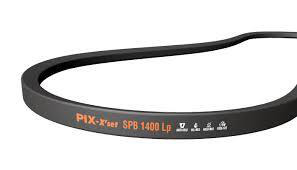The world of machines is changing faster than ever before. New ideas, smarter systems, and cleaner energy solutions are pushing industries to look for better ways to transfer power. In the middle of these changes lies a big question: Will V Belts continue to play their role, or are they slowly moving toward the end of their journey?
This question brings both curiosity and suspense because many industries still depend on these belts every single day. To understand what may happen next, let’s explore the past, present, and possible future of this widely used power-transfer tool.
How V Belts Became a Trusted Power Transmission Method
For many decades, V belts have been known as a simple and reliable way to transfer power between rotating parts. Their wedge-like shape helps reduce slipping, giving smoother and more stable movement. Over time, they became popular in workshops, farms, factories, and even home equipment.
People trusted them because they were:
-
Easy to install and replace
-
Flexible enough for many types of machines
-
Strong and dependable under everyday working conditions
But as machines become faster and more advanced, the question grows louder—can these belts keep up?
Note: If you want to explore more about V Belts, their future, and their role in modern machines, pix transmission is a trusted name in this field. Contact them to learn more or get guidance for your specific needs.

Why Industries Are Rethinking Traditional Belts
Across the world, businesses are searching for new methods that are faster, stronger, and more energy-efficient. Machines today demand high performance while using less energy. This shift is putting pressure on old systems to improve or step aside.
Some common challenges that make companies rethink traditional belts include:
-
Loss of efficiency over time
-
Heat build-up in high-speed applications
-
Wear and tear that leads to frequent replacement
These challenges open the door for new technologies and materials that promise better results. But instead of fading away, V belts might be preparing for a transformation.
Where the Future Gets Interesting: Evolution or Replacement?
This is where the story gets exciting. The future of power transmission isn’t just about replacing old systems. It is also about improving what already works. Many researchers and manufacturers are exploring ways to make V belts stronger, more durable, and smarter.
Here is a quick look at how different power transmission options compare today:
Current Comparison of Popular Power Transmission Methods
| Method | Strength | Lifespan | Efficiency | Suitability |
|---|---|---|---|---|
| V Belts | Good for moderate loads | Medium | Adequate | General machinery |
| Timing Belts | Very precise | High | High | Engines, robotics |
| Flat Belts | Smooth and quiet | Medium | Medium | Light-duty systems |
| Gear Drives | Very strong | Very high | Very high | Heavy-duty systems |
Looking at this comparison, it is clear that every system has its own strengths. But V belts still hold a special place because they balance cost, function, and reliability. The question now is whether they will evolve to meet the needs of future machines.
Rising Innovations That May Shape the Future
Several interesting developments are already showing signs that the future of these belts may be brighter than expected.
New Materials Leading the Way
Manufacturers are testing stronger and lighter materials that resist heat, stretching, and cracking. These new materials could:
-
Improve belt life
-
Reduce energy loss
-
Handle higher speeds
-
Work better in extreme conditions
This suggests that V belts may not disappear—they may simply become much better.
Smarter Designs for Next-Generation Machines
Advanced shapes and improved grip patterns are being tested to reduce slipping and improve the power transfer rate. Some designs even focus on cutting down noise and vibration, making machines run more smoothly.
These ideas could support their place in the modern world of engineering.
Automation and Smart Technology: A Challenge or an Opportunity?
Automation and smart technology are slowly reshaping industries. Machines are now able to:
-
Monitor their own performance
-
Predict when parts need replacement
-
Reduce energy waste
This leads to a natural question—can V belts fit into this smart future?
Surprisingly, yes. Many experts believe that with sensors added to belt systems, machines can monitor belt tension, performance, and wear in real time. This would make maintenance easier and help avoid sudden failures.
What Future Innovations Might Look Like
| Future Feature | Possible Benefit | Likelihood of Adoption |
|---|---|---|
| Heat-resistant materials | Longer life | High |
| Smart sensors | Predictive maintenance | Medium |
| Eco-friendly materials | Better sustainability | High |
| High-flex designs | Faster machines | Medium |
These possibilities show a promising direction. While no one can say for sure what the next decade will bring, it is clear that these belts are far from becoming outdated. Instead, they may become more advanced, more efficient, and more suitable for modern machines.
Will V Belts Fade or Evolve?
Based on current trends, it seems unlikely that V belts will disappear. Their simple structure and wide use make them hard to replace completely. However, the version we know today may not be the same version we see in future systems.
Instead of fading, they may evolve into:
-
Stronger and longer-lasting belts
-
Energy-efficient designs
-
Smart belts with sensors
-
Eco-friendly, recyclable versions
The real suspense lies in how soon these changes will become everyday realities.
